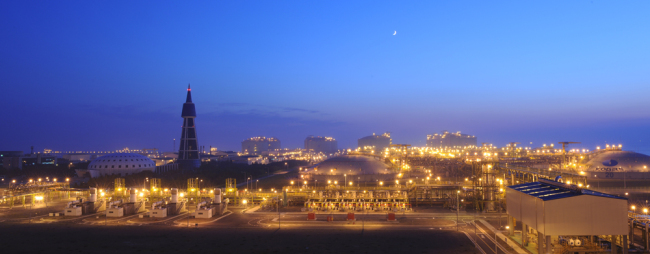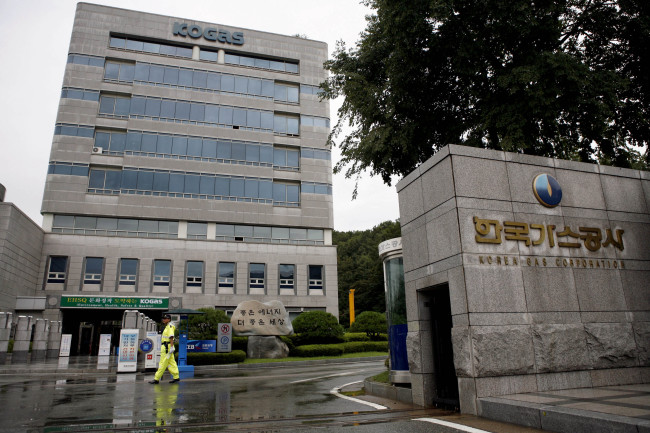
The state-run Korea Gas Corp., better known as KOGAS, has contributed to the nation’s economic growth and the quality of life of Koreans by importing liquefied natural gas and supplying it to power generation plants, gas-utility companies and city gas companies nationwide since its foundation in 1983.
The company has now grown to become the world’s biggest liquefied natural gas buyer, running a nationwide pipeline network spanning over 3,562km reaching end users and power stations around the country. The energy giant imports approximately 35 million tons of LNG to Korea annually.
KOGAS has 60 LNG storage tanks, one of which is the world’s largest with a holding capacity of 8.86 million kiloliters.
The company has also actively carried out overseas projects to raise the nation’s energy efficiency and to export its advanced management know-how and technology.
As a result, KOGAS secured more than 300 tons of natural gas as of the end of 2012 through its exploration and production activities overseas.
As of 2013, the company said it is active in 28 exploration and production, liquefaction and terminal operation projects in 17 countries around the world.
Specifically, KOGAS proved its capabilities as a major project operator in Iraq’s Akkas project and as a resource developer with the successful discovery of a sizeable gas field in Mozambique. The gas field in Mozambique has ensured that Korea has enough natural gas reserves to meet the entire country’s needs over a five-year period.
At the beginning of this year, KOGAS also became involved in an exploration project in Cyprus, providing the foundation to grow into one of the world’s largest exploration & production companies.
The company has now grown to become the world’s biggest liquefied natural gas buyer, running a nationwide pipeline network spanning over 3,562km reaching end users and power stations around the country. The energy giant imports approximately 35 million tons of LNG to Korea annually.
KOGAS has 60 LNG storage tanks, one of which is the world’s largest with a holding capacity of 8.86 million kiloliters.
The company has also actively carried out overseas projects to raise the nation’s energy efficiency and to export its advanced management know-how and technology.
As a result, KOGAS secured more than 300 tons of natural gas as of the end of 2012 through its exploration and production activities overseas.
As of 2013, the company said it is active in 28 exploration and production, liquefaction and terminal operation projects in 17 countries around the world.
Specifically, KOGAS proved its capabilities as a major project operator in Iraq’s Akkas project and as a resource developer with the successful discovery of a sizeable gas field in Mozambique. The gas field in Mozambique has ensured that Korea has enough natural gas reserves to meet the entire country’s needs over a five-year period.
At the beginning of this year, KOGAS also became involved in an exploration project in Cyprus, providing the foundation to grow into one of the world’s largest exploration & production companies.

The company said its goal is to secure global competitiveness in the entire value chain of the gas industry, from upstream to midstream to downstream, securing resource supply and future growth engine businesses in E&P, LNG terminal operations and pipelining.
In line with its new Vision 2017 roadmap, the gas giant is making every effort to attain its goal of raising the self-supply rate from 9 percent as of 2012 to 25 percent by 2017.
By Seo Jee-yeon (jyseo@heraldcorp.com)
In line with its new Vision 2017 roadmap, the gas giant is making every effort to attain its goal of raising the self-supply rate from 9 percent as of 2012 to 25 percent by 2017.
By Seo Jee-yeon (jyseo@heraldcorp.com)




![[Herald Interview] 'Amid aging population, Korea to invite more young professionals from overseas'](http://res.heraldm.com/phpwas/restmb_idxmake.php?idx=644&simg=/content/image/2024/04/24/20240424050844_0.jpg&u=20240424200058)

![[Pressure points] Leggings in public: Fashion statement or social faux pas?](http://res.heraldm.com/phpwas/restmb_idxmake.php?idx=644&simg=/content/image/2024/04/23/20240423050669_0.jpg&u=)












